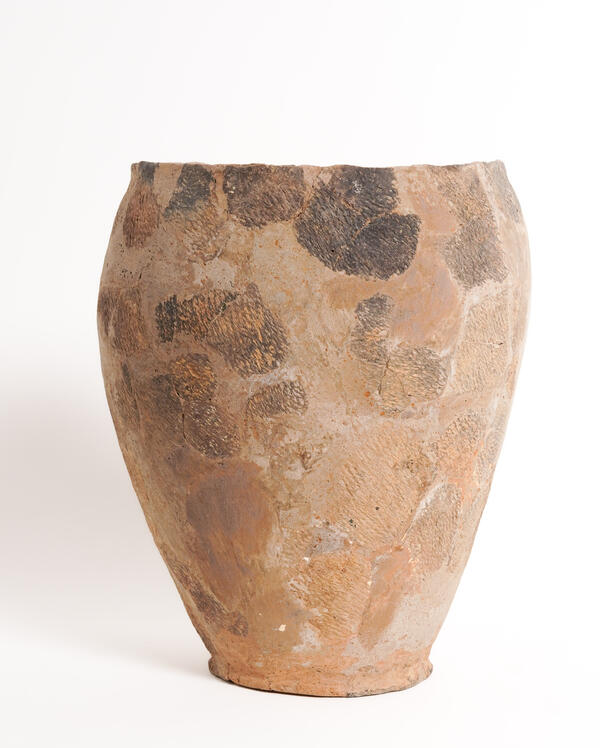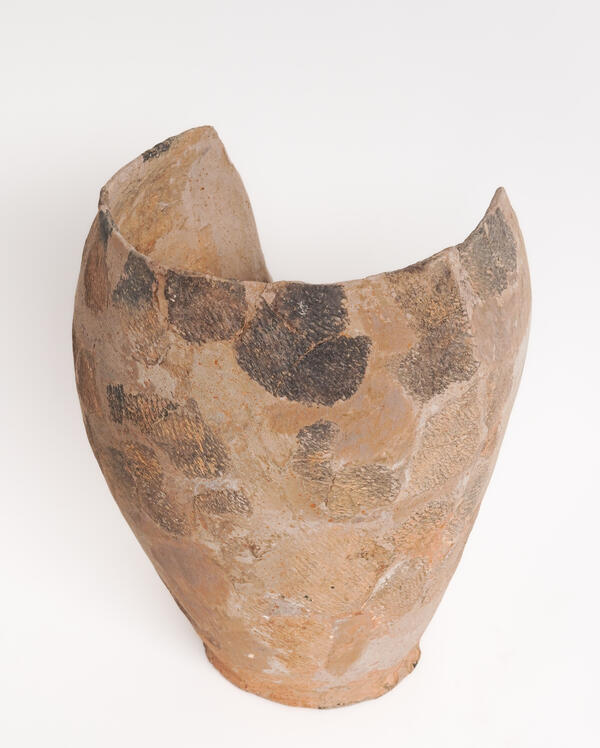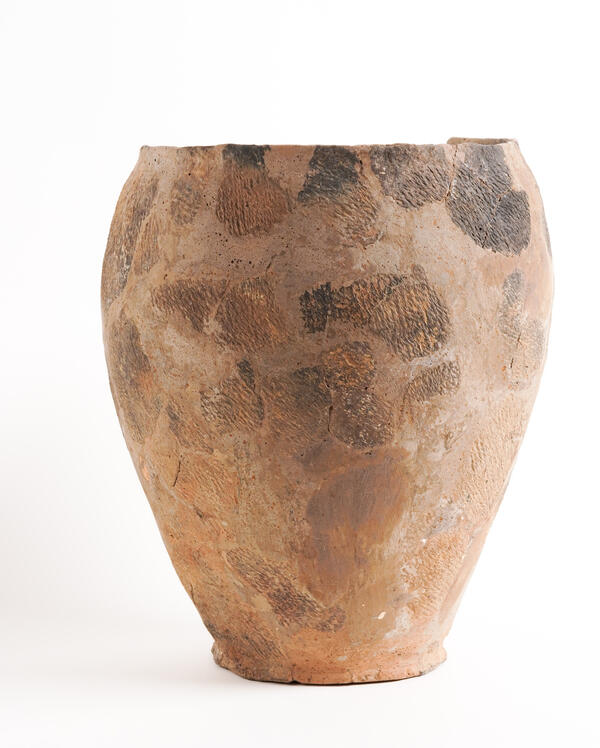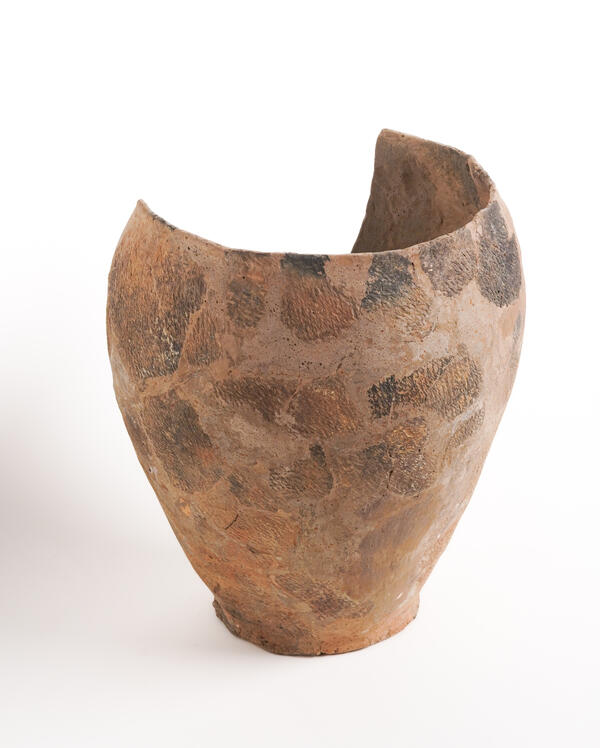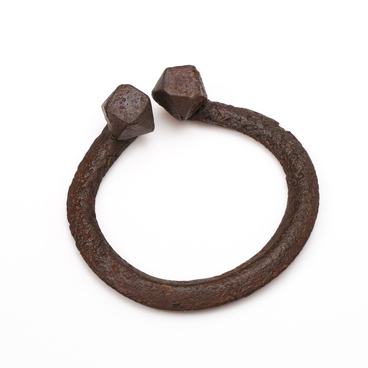Impressing nets or fabrics was a technique of molding the surface of a vessel to resemble a crude cloth imprint. The pottery was molded by hand as yet unaware of the potter’s wheel, hence its unevenness. In Eastern Europe this technique existed for 2,500 years in the Bronze Age and early Iron Age. The net texture — the rippled surface of the pottery vessel — is easily recognizable. All types of ceramic surface texture, referred to as “textile ceramics”, were applied to the already shaped vessel, the surface of which was made “rippled”. This technique is not connected with the technology of molding, it is decorative.
Textile ceramics was used by all the Proto-Finnic peoples and is an indicator of the links covering the forest zone of Eastern Europe. The creators of this molded net impressed vessel were people of the Dyakovo culture, presumably Finno-Ugric tribes, who lived for a thousand years in a tribal system on the territory of the entire future suburbs of Moscow. The places where they lived are called settlement sites. Experts concluded that they had no written language, otherwise the alphabet would certainly have been reflected on the walls of their net impressed vessels.
The Dyakovo people made not only vessels for food but also funeral urns of clay. Dyakovo pottery fragments are often found in archeological layers and immediately recognizable by their distinctive net impressed pattern. A considerable part of the net impressed fragments from the East European area has traces of scratching on the inner surface, which is incompatible with the brush-molding technique. The absence of traces of brush-molding for vessels of the Dyakovo culture is demonstrated by a mass development of the sites of Nastasino, Kruglitsa and Kuznechiki, totaling 150,000 sherds.
The Kolomna Museum of Local History has a large molded vessel from this era, 31 cm high with a bottom diameter of 14.5 cm. Fragments of such vessels are often found in Kolomna at Gorodishche, at the settlement of Blyudechko in the Kolomna Kremlin and at the Staro-Golutvin Monastery at the mouth of the Moskva River. Thousands of pottery fragments were found in settlements on the Oka. Around 1,400 molded vessels were discovered during archaeological excavations at the ancient settlement of Nastasino near Kolomna.
Textile ceramics was used by all the Proto-Finnic peoples and is an indicator of the links covering the forest zone of Eastern Europe. The creators of this molded net impressed vessel were people of the Dyakovo culture, presumably Finno-Ugric tribes, who lived for a thousand years in a tribal system on the territory of the entire future suburbs of Moscow. The places where they lived are called settlement sites. Experts concluded that they had no written language, otherwise the alphabet would certainly have been reflected on the walls of their net impressed vessels.
The Dyakovo people made not only vessels for food but also funeral urns of clay. Dyakovo pottery fragments are often found in archeological layers and immediately recognizable by their distinctive net impressed pattern. A considerable part of the net impressed fragments from the East European area has traces of scratching on the inner surface, which is incompatible with the brush-molding technique. The absence of traces of brush-molding for vessels of the Dyakovo culture is demonstrated by a mass development of the sites of Nastasino, Kruglitsa and Kuznechiki, totaling 150,000 sherds.
The Kolomna Museum of Local History has a large molded vessel from this era, 31 cm high with a bottom diameter of 14.5 cm. Fragments of such vessels are often found in Kolomna at Gorodishche, at the settlement of Blyudechko in the Kolomna Kremlin and at the Staro-Golutvin Monastery at the mouth of the Moskva River. Thousands of pottery fragments were found in settlements on the Oka. Around 1,400 molded vessels were discovered during archaeological excavations at the ancient settlement of Nastasino near Kolomna.

